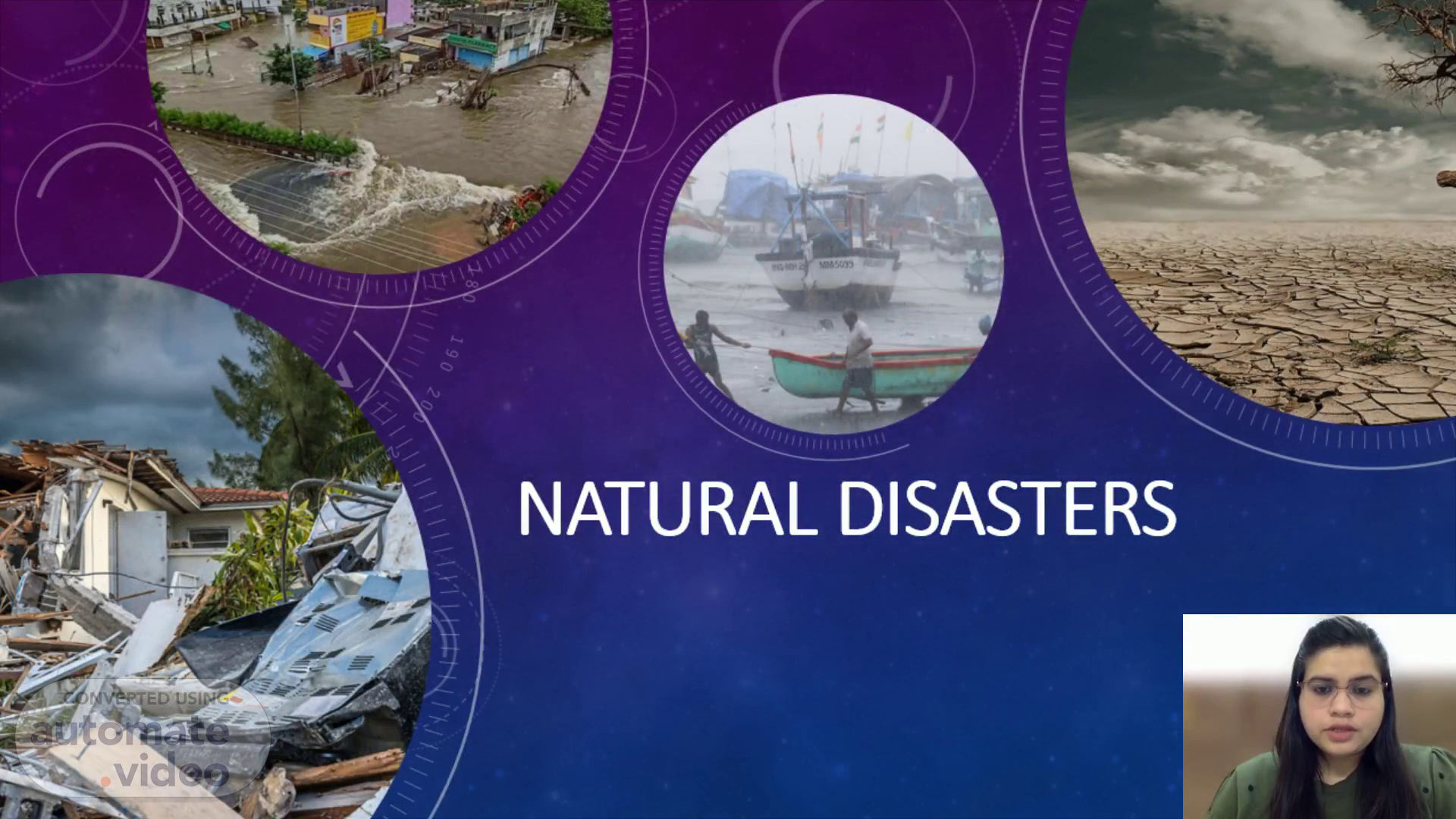Scene 1 (0s)
NATURAL DISASTERS. A picture containing outdoor Description automatically generated.
Scene 2 (2s)
OUTLINE. SLIDE 1: Definition and difference between a natural hazard and a disaster SLIDE 2: Classification of natural disasters SLIDE 3: Natural Disasters in India SLIDE 4,5&6: Earthquakes in India ( Zones, Consequences, effects and mitigation) SLIDE 7: Conclusion.
Scene 3 (32s)
Definition. A natural disaster can be defined as: “A major event brought about by the natural processes of the Earth that causes widespread destruction to the environment and loss of life.” As compared to natural hazards, natural disasters are relatively sudden and cause large scale, widespread death, loss of property and disturbance to social systems and life over which people have a little or no control. Thus, any event can be classed as disaster when the magnitude of destruction and damage caused by it is very high..
Scene 4 (1m 53s)
Classification of natural disasters. Table Description automatically generated.
Scene 5 (2m 40s)
Natural Disasters in India. India is vast and diverse in terms of its physical and socio-cultural attributes. It is largely due to its vast geographical area, environmental diversities and cultural pluralities. Earthquake Tsunami Cyclones Floods Droughts.
Scene 6 (4m 11s)
Earthquakes in India. Diagram Description automatically generated.
Scene 7 (5m 51s)
Effects of earthquakes. Earthquakes are also responsible for landslides and often these cause obstructions in the flow of rivers and channels resulting in the formation of reservoirs. Sometimes, rivers also change their course causing floods..
Scene 8 (6m 35s)
Earthquake hazard mitigation. Establishing earthquake monitoring systems Preparing a vulnerability map of the country Modifying the house types and building designs in vulnerable regions Making it mandatory to adopt earthquake resistance designs.
Scene 9 (7m 49s)
CONCLUSION. It can be concluded that disasters can be natural or the results of human activities, and all hazards need not turn into disasters since it is difficult to eliminate disasters, particularly natural disasters. Then the next best option is mitigation and preparedness. Introduction of the Disaster Management Bill, 2005 and establishment of National Institute of Disaster Management are some examples of the positive steps taken by the Government of India..
Scene 10 (8m 48s)
Thank you!!.
